| Brand Name: | DeFar |
|---|---|
| Color: | grey,yellow,black,white,free customized |
| Material: | Fiberglass Reinforced Polymer |
| Certificate: | ISO9001 |
| size: | standard or customized |
| Model Number: | DF001 |
| Place of Origin: | China (Mainland) |
| Length: | no limited |
Quick Details
Specifications
We can supply you a big range of FRP pultrusion section (FRP shape), include FRP square tube, rectangular tube, C channel, angle, I beam, T bar, flat bar, round tube, and custom shapes are available, too.
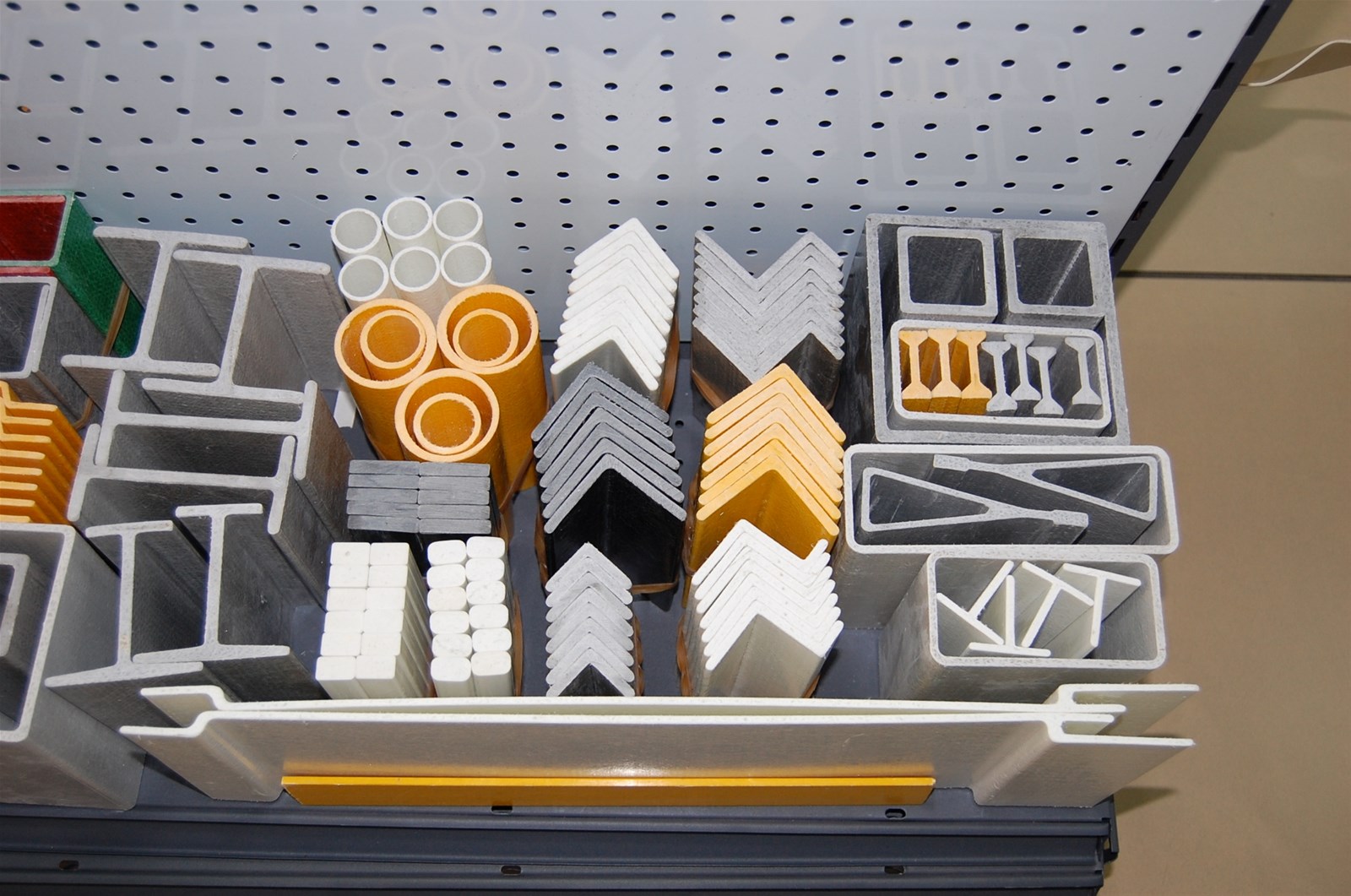
Advantages:
Light weight, High strength, Non-insulation, Anti-corrosion, Aging resistant, UV resistant
Specification:
Shape: standard, or custom made.
Size: standard, or custom made.
Color: grey, yellow, white, black, custom made.
the Pultrusion Process:
Fiberglass profiles are manufactured using the pultrusion process. the machine grips the raw material and "pulls" them through a series of steps until the finished profiles reaches the cut-off saw.
1. Reinforcement
2. Wet-Out
3. Surface Veil
4. Curing
5. Cutting
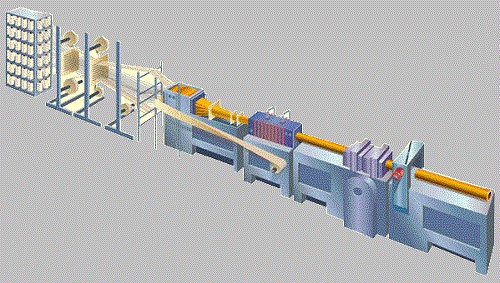
the finished products is then pulled to the cut-off saw and cut to the desired length.
the raw resin is almost always a thermosettig resin, and is sometimes combined with fillers, catalysts and pigments. The fiber reinforcement becomes fully impregnated(wetted-out) with the resin so that all the fiber filaments are thoroughly saturated with the resin mixture.
DeFar FRP vs. Structural Timber
When it comes to structural applications. Fiberglass reinforced plastic offers significant advantages comared to timber. Unlike wood, our Fiberglass profiles won't warp, rot or decay from exposure to moisture. They're resistant to corrosion, insects, mold and mildew. Best of all, they don't need environmentally hazardous coating or preservatives to deliver exceptional durability. DeFar FRP profiles are:
1. Stronger and more rigid than structure timber
2. Corrosion, rot and insect resistant
3. Cosistent in strength, appearance and quality from piece to piece.
DeFar FRP vs. Steel
Fiberglass reinforced plastic is highly corrosion resistant. so unlike steel, it won't rust when it's exposed to harsh weather and chemicals. It's also nonconductive and impact resistant. Pound for pound, our FRP structure members are stronger than many steels in the lengthwise direction, and weight up to 75% less. Compared to steel, our FRP offers these advantages:
1. the strength of steel at 1/4 the weight
2. Simple fabrication with standard tools---no welders or cutting torches
3. Molded-in color and resin options, including fire retardant.
DeFar FRP vs. Aluminum
Pultruded fiberglass-reinforced polymer offers substantial advantages compared to aluminum extrusions. Our fiberglass profiles won't corrode and are non-conductive. Unlike aluminum, FRP has low thermal conductivity, so it's a good insulator. and FRP pultrusions won't deform under impact. FRP profiles offer:
1. Superior resistance to a broad range of chemicals
2. EMI/RFI transparency (transparent to radio/radar/antenna transmissions)
3. Light weight with high strength
Traditional building materials have their place. but for harsh, corrosive environments, FRP is a smart choice
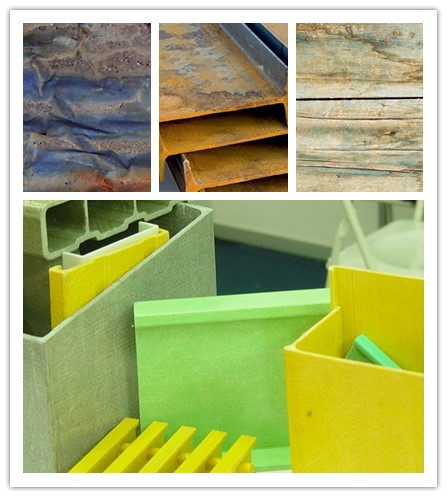
Electrical Applications
Cross arm
Transformer air duct spacer sticks
Pole line hardware
Ladders
Bus bar supports
Motor top sticks
Cable support trays
U-shaped motor stator wedges
Service truck booms
Switch actuators
Fuse tubes
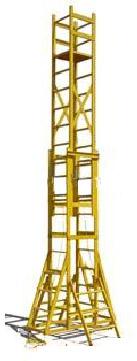
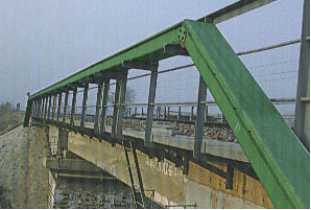
Transportation/Construction uses
Lading bars in trucks and railcars
Kick plates
Trailer jamp posts
Subway contact rail covers
Bus luggage racks
Seating
Flat sheets for refrigerated trucks
Green house structures
Roof trim
Purlin
Antennas
Gutters
Light weight, High strength, Non-insulation, Anti-corrosion, Aging resistant, UV resistant
Specification:
Shape: standard, or custom made.
Size: standard, or custom made.
Color: grey, yellow, white, black, custom made.
the Pultrusion Process:
Fiberglass profiles are manufactured using the pultrusion process. the machine grips the raw material and "pulls" them through a series of steps until the finished profiles reaches the cut-off saw.
1. Reinforcement
2. Wet-Out
3. Surface Veil
4. Curing
5. Cutting
the finished products is then pulled to the cut-off saw and cut to the desired length.
the raw resin is almost always a thermosettig resin, and is sometimes combined with fillers, catalysts and pigments. The fiber reinforcement becomes fully impregnated(wetted-out) with the resin so that all the fiber filaments are thoroughly saturated with the resin mixture.
DeFar FRP vs. Structural Timber
When it comes to structural applications. Fiberglass reinforced plastic offers significant advantages comared to timber. Unlike wood, our Fiberglass profiles won't warp, rot or decay from exposure to moisture. They're resistant to corrosion, insects, mold and mildew. Best of all, they don't need environmentally hazardous coating or preservatives to deliver exceptional durability. DeFar FRP profiles are:
1. Stronger and more rigid than structure timber
2. Corrosion, rot and insect resistant
3. Cosistent in strength, appearance and quality from piece to piece.
DeFar FRP vs. Steel
Fiberglass reinforced plastic is highly corrosion resistant. so unlike steel, it won't rust when it's exposed to harsh weather and chemicals. It's also nonconductive and impact resistant. Pound for pound, our FRP structure members are stronger than many steels in the lengthwise direction, and weight up to 75% less. Compared to steel, our FRP offers these advantages:
1. the strength of steel at 1/4 the weight
2. Simple fabrication with standard tools---no welders or cutting torches
3. Molded-in color and resin options, including fire retardant.
DeFar FRP vs. Aluminum
Pultruded fiberglass-reinforced polymer offers substantial advantages compared to aluminum extrusions. Our fiberglass profiles won't corrode and are non-conductive. Unlike aluminum, FRP has low thermal conductivity, so it's a good insulator. and FRP pultrusions won't deform under impact. FRP profiles offer:
1. Superior resistance to a broad range of chemicals
2. EMI/RFI transparency (transparent to radio/radar/antenna transmissions)
3. Light weight with high strength
Traditional building materials have their place. but for harsh, corrosive environments, FRP is a smart choice
Electrical Applications
Cross arm
Transformer air duct spacer sticks
Pole line hardware
Ladders
Bus bar supports
Motor top sticks
Cable support trays
U-shaped motor stator wedges
Service truck booms
Switch actuators
Fuse tubes
Transportation/Construction uses
Lading bars in trucks and railcars
Kick plates
Trailer jamp posts
Subway contact rail covers
Bus luggage racks
Seating
Flat sheets for refrigerated trucks
Green house structures
Roof trim
Purlin
Antennas
Gutters



